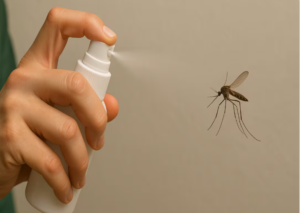Although an ingrown toenail has multiple causes, there are considerations that every patient should take into account when treating this condition.
Experts say there are many causes for this problem. These include wearing inappropriate shoes, cutting nails too short or not straight, various medical conditions, infections, and wounds.
According to the MSD Manual, other causes may include walking on tiptoe and in other unconventional ways, as well as the bulbous shape of the big toe. Experts also point to other conditions and congenital problems, which is why only a specialized doctor can indicate the real cause of the problem.
In addition to redness in the area, people with an ingrown toenail may experience pain, tenderness, swollen skin, swelling, and infection, according to information from the Mayo Clinic.
What should I do if I have an ingrown toenail?
The first thing to do is to consult a podiatrist, who is a specialist in this area. If the patient is diabetic, the medical visit should be immediate, since in these cases it should be treated as an emergency. Daniel Canté, a doctor specializing in diabetic foot, mentions that patients should not manipulate the ingrown toenail, nor should they go to unqualified people.
According to the professional, diabetes should be considered a cardiovascular disease. Therefore, an ingrown toenail that is not treated correctly could cause microvascular damage that begins in regions further away from the heart, such as the toes or forefoot. “If this inflammation is manipulated, it can lead to gangrene, and amputation of a toe or leg may occur,” Canté emphasizes.
The specialist mentions that around 10 percent of amputations occur due to an ingrown toenail that was not treated properly.
Likewise, people who suffer from kidney disease, heart disease, high cholesterol, hypertension, metabolic syndrome, and other diseases should see a professional and not treat inflammation at home .
In the case of people who do not have this type of condition, they can opt for some home measures, but it is also recommended that they consult a doctor to avoid complications. According to Medline Plus, these are some of them:
- Soak your foot in warm water three to four times a day if possible. Use a temperature that is comfortable. At all other times, keep your foot dry.
- If possible, gently massage the affected area. Make sure to do so with clean hands.
- Place a small piece of cotton under the nail. Soak the cotton or dental floss with water or antiseptic.
- In general, specialists recommend not removing the nail at home, but rather seeing the appropriate doctor.

Cutting nails straight and to the right size prevents ingrown nails, according to experts. (Photo Prensa Libre: Freepik)
How to prevent ingrown toenails?
Prevention is the key, Canté says. The following recommendations are useful for preventing ingrown toenails that put your health at risk:
-
- Cut your nails straight across. If you have poor circulation, we recommend that you see a podiatrist for this.
- Keep your nails at an appropriate length. According to the Mayo Clinic, they should be at the length of your fingers.
- Always check that your feet do not show any abnormal signs.
- Wear properly fitting shoes to avoid injury.
- Protect your feet if you do an activity that involves this measure.
- If you have diabetes, check your feet daily for any signs of ingrown toenails.






















+ There are no comments
Add yours